The White-throated Swift (Aeronautes saxatalis) stands as an avian marvel, inhabiting the rugged landscapes of western North America.
Recognized for its sleek, aerodynamic appearance, this medium-sized bird is characterized by distinctive behaviors and adaptations.
Its long, slender wings and forked tail enable unparalleled aerial prowess, making it a masterful hunter of flying insects.
Notably, the white patch on its throat sets it apart, contributing to a visually striking plumage against the backdrop of cliffs and canyons where it thrives. Social nesting in colonies, crepuscular activity, and territorial defense further distinguish the White-throated Swift.
As a species emblematic of adaptability and precision in flight, exploring its life history’s intricacies unveils a captivating survival narrative in challenging environments. Stay sharp.
Identifying Criteria of Antillean Palm Swift
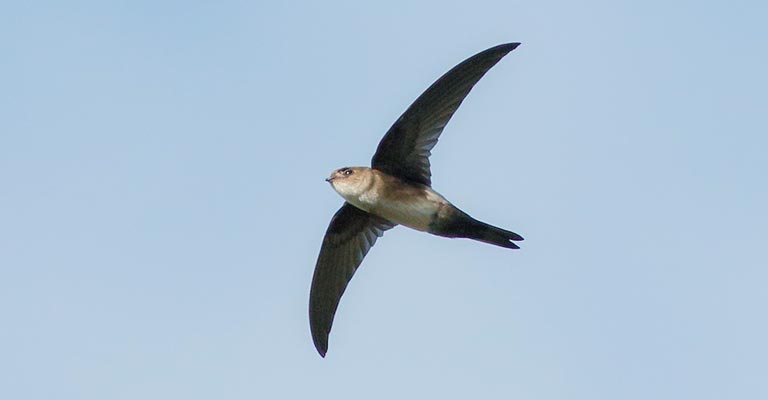
The Antillean Palm Swift (Tachornis phoenicobia) is a small bird species in the Caribbean region, known for its distinctive characteristics and behaviors.
Identifying this specific bird requires a keen eye and attention to critical features. Here are some of the points to help in the identification of the Antillean Palm Swift:
Size and Shape
The Antillean Palm Swift is a small bird with a compact body, measuring around 13 to 15 centimeters in length.
Its slender and streamlined body features a short tail and pointed wings. The overall shape is adapted for swift and agile flight.
Coloration
The plumage of the Antillean Palm Swift is predominantly dark brown or black, providing excellent camouflage against the background of palm trees and other vegetation where it is commonly found. The underparts may appear slightly lighter than the upperparts.
Distinctive Forked Tail
One of the most prominent features of the Antillean Palm Swift is its deeply forked tail.
The tail is a visual cue for identification and plays a crucial role in its swift and precise aerial maneuvers. The forked tail helps in balancing and steering during flight.
Habitat Preference
The preferred habitat of the Antillean Palm Swift is within palm groves, coastal areas, and tropical lowland forests.
These birds often fly swiftly among palm fronds, hunting for insects—their association with specific habitats aids in narrowing down the possibilities during identification.
Flight Pattern
Observing the flight pattern of the Antillean Palm Swift is instrumental in identification.
They are highly agile and capable of intricate aerial acrobatics. Their flight is characterized by rapid wing beats, allowing them to navigate effortlessly through dense vegetation.
Vocalizations
While the Antillean Palm Swift is not known for elaborate songs, it does produce distinct vocalizations that can aid in identification.
These calls are often high-pitched and can be heard during flight or when the birds are perched in their preferred habitats.
Social Behavior
Antillean Palm Swifts are often observed in small groups, demonstrating a social nature.
Observing their behavior within a group, whether in flight or perched, can provide additional clues for identification. They may engage in mutual grooming and vocal interactions.
Geographic Range
Understanding the geographic range of the Antillean Palm Swift is crucial for accurate identification.
These birds are primarily found in the Caribbean, including islands such as Puerto Rico, Hispaniola, and Cuba. Confirming their presence within this range eliminates confusion with similar species in other parts of the world.
Identifying the Antillean Palm Swift requires a holistic approach, considering size, coloration, tail shape, habitat, flight pattern, vocalizations, social behavior, and geographic range.
Combining these key points will enhance your ability to recognize and appreciate this remarkable bird species in its natural environment.
Taxonomy of Antillean Palm Swift
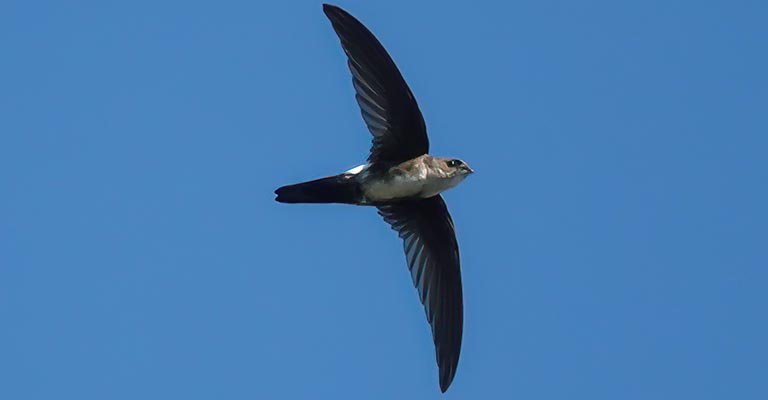
Go through the following table summarizing the taxonomy details of Antillean Palm Swift:
| Taxonomic Level | Classification |
| Domain | Eukaryota |
| Kingdom | Animalia |
| Phylum | Chordata |
| Class | Aves |
| Clade | Strisores |
| Order | Apodiformes |
| Family | Apodidae |
| Genus | Tachornis |
| Species | T. phoenicobia |
The Antillean Palm Swift (Tachornis phoenicobia) is a species of swift found in the Caribbean region, and it is noteworthy for having two distinct subspecies: the nominate T. p. phoenicobia Gosse, 1847, and T. p. iradii (Lembeye, 1850).
- Nominate Subspecies (T. p. phoenicobia): The nominate subspecies are the Antillean Palm Swift’s standard or original representative. Found in various Caribbean islands, including Cuba, this subspecies exhibits the typical characteristics of the species. Its distribution and ecological preferences contribute to our understanding of Antillean Palm Swifts’ broader population dynamics and behaviors.
- T. p. iradii Subspecies: The subspecies T. p. iradii, named after Lembeye, is another distinct population of the Antillean Palm Swift. This subspecies is found in specific regions, and differences in plumage, behavior, or ecological preferences may distinguish it from the nominate subspecies. Understanding the nuances of T. p. iradii contributes to a more comprehensive knowledge of the Antillean Palm Swift’s overall diversity and adaptation within its range.
The existence of two subspecies within the Antillean Palm Swift underscores the species’ adaptability and the potential influence of varying environments on its evolution.
Studying these subspecies provides valuable insights into the broader ecological context and the intricate dynamics of this fascinating bird in the Caribbean region.
Common Food of Antillean Palm Swift
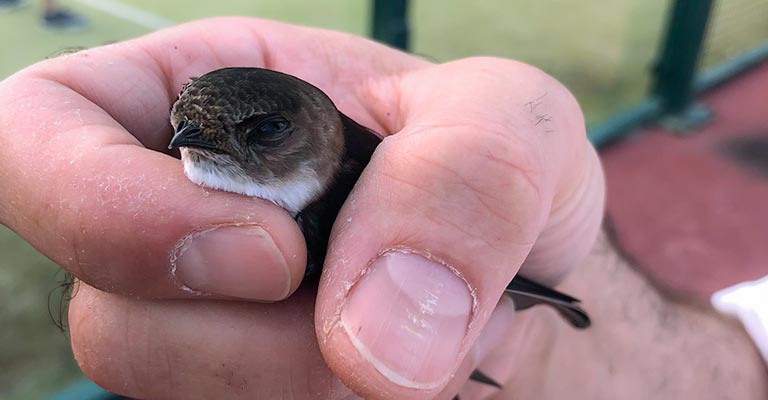
The Antillean Palm Swift primarily sustains itself through a diet of insects.
These small, agile birds are adept aerial foragers, capturing prey while in flight. Key components of their everyday food habits include:
- Aerial Insects: Antillean Palm Swifts excel in capturing flying insects mid-air, such as mosquitoes, flies, and various other small flying arthropods.
- Small Beetles: They feed on various small beetles, abundant in their preferred habitats, like palm groves and coastal areas.
- Flying Termites: Antillean Palm Swifts opportunistically feed on flying termites, especially when these insects take to the air during termite swarms.
- Tiny Moths and Butterflies: Their diet includes tiny moths and butterflies caught in flight, showcasing their hunting techniques’ swift and agile nature.
- Spiderlings: Antillean Palm Swifts may also consume spiderlings, contributing to a diverse diet of small invertebrates.
- Aphids and Small Insects on Vegetation: While in flight or perched on vegetation, they may pick off small insects, such as aphids, from leaves and stems.
- Occasional Fruit Nectar: While their primary diet consists of insects, Antillean Palm Swifts may occasionally consume fruit nectar, especially in regions where suitable insect prey is scarce.
- Water and Saliva for Nest-Building: During the nesting season, these swifts may use water and saliva to construct their nests, demonstrating adaptability in their resource utilization.
This varied diet showcases the adaptability of the Antillean Palm Swift in extracting nutrition from a range of sources, highlighting their importance in maintaining ecological balance within their tropical habitats.
Antillean Palm Swift’s Life History
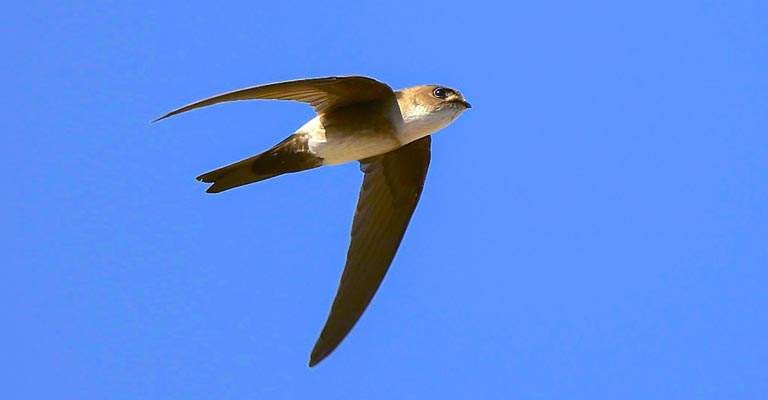
The Antillean Palm Swift (Tachornis phoenicobia) is a captivating bird species found in the Caribbean region, distinguished by its aerial agility and association with palm groves.
Understanding the life history of the Antillean Palm Swift involves delving into its habitat preferences, range map, nesting behavior, breeding patterns, potential diseases, treatment, and conservation efforts.
Habitat
Antillean Palm Swifts primarily inhabit palm groves, coastal regions, and tropical lowland forests within the Caribbean.
Their reliance on these habitats is not only for shelter but also for the abundance of flying insects that form a crucial part of their diet.
Range Map
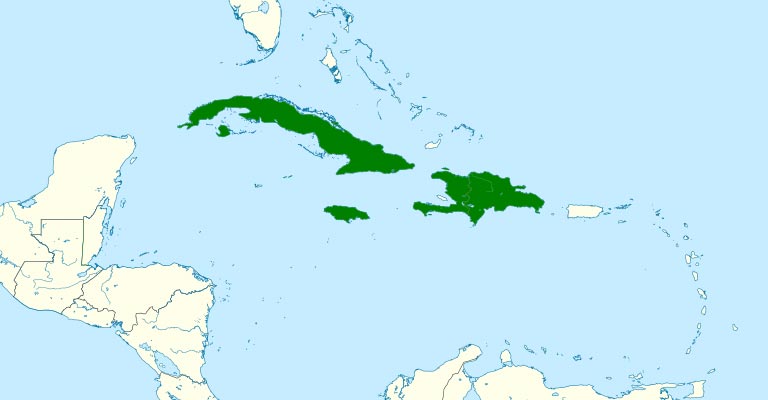
The species’ distribution spans various Caribbean islands, including Puerto Rico, Hispaniola, Cuba, and other smaller islands.
A range map visually represents their geographical distribution, emphasizing their presence in specific ecosystems.
Breeding
Breeding season varies, often correlating with the availability of insect prey. Males engage in elaborate courtship displays, showcasing their aerial prowess.
Females lay small, white eggs in the nest, and both parents are responsible for incubating and feeding the chicks.
Diseases
While the Antillean Palm Swifts generally enjoy a healthy existence, they can be susceptible to avian diseases.
Typical issues may include respiratory infections and external parasites. Monitoring for signs of illness, such as lethargy or abnormal behavior, is crucial.
Treatment
In cases of illness, prompt veterinary intervention is essential. Treatment may involve antibiotics for bacterial infections, supportive care for weakened individuals, and parasite control measures.
Effective treatment contributes to the overall health and well-being of the population.
Conservation
Antillean Palm Swifts face threats like habitat destruction due to urbanization and agricultural expansion.
Conservation efforts focus on preserving and restoring their natural habitats, raising awareness about their ecological importance, and implementing measures to mitigate potential risks.
The life history of the Antillean Palm Swift reflects its remarkable adaptations to Caribbean ecosystems.
Nesting Habit of Antillean Palm Swift
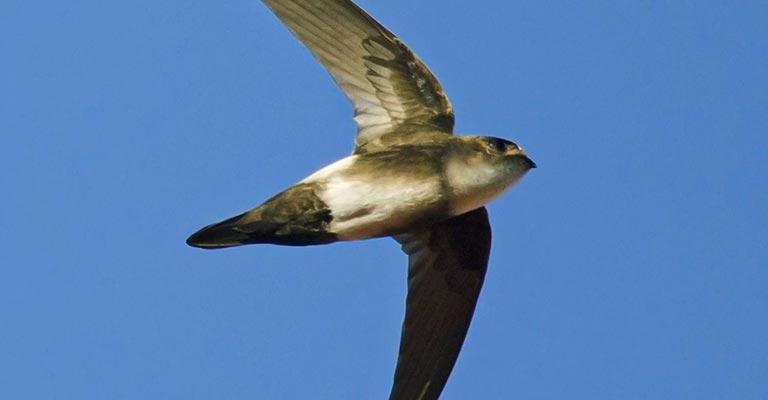
Here’s a lovely table summarizing the nesting details of the Antillean Palm Swift:
| Nesting Details | Facts |
| Clutch Size | Typically 2 eggs |
| Number of Broods | Often raises a single brood per season |
| Egg Length | Approximately 1.5 centimeters (cm) |
| Egg Width | Around 1 centimeter (cm) |
| Incubation Period | Approximately 19 to 21 days |
| Nestling Period | Around 28 to 30 days |
| Egg Description | Small, white eggs with a smooth surface |
| Nest Construction | Hanging, pouch-like nest under palm fronds |
| Nest Material | Plant fibers, feathers, and saliva |
| Incubation and Care | Shared responsibility by both parents |
| Nest Location | Undersides of palm fronds |
| Nest Placement | Offers easy access for swift take-offs |
These nesting details provide insights into the reproductive biology and behaviors of the Antillean Palm Swift, showcasing the species’ adaptation to its preferred habitat and unique nesting strategies.
Antillean Palm Swifts exhibit distinctive nesting habits, constructing hanging, pouch-like nests beneath palm fronds using plant fibers, feathers, and saliva.
Typically laying two small, smooth-surfaced white eggs, the incubation period lasts 19 to 21 days, followed by both parents’ attentive shared care period. Nestlings remain in the nest for approximately 28 to 30 days, after which they fledge.
This strategic nesting underlines the species’ adaptation to palm groves and tropical environments, offering secure locations for rearing their young while facilitating quick and agile departures for their adept aerial lifestyle.
5 Behavioral Habits of Antillean Palm Swift
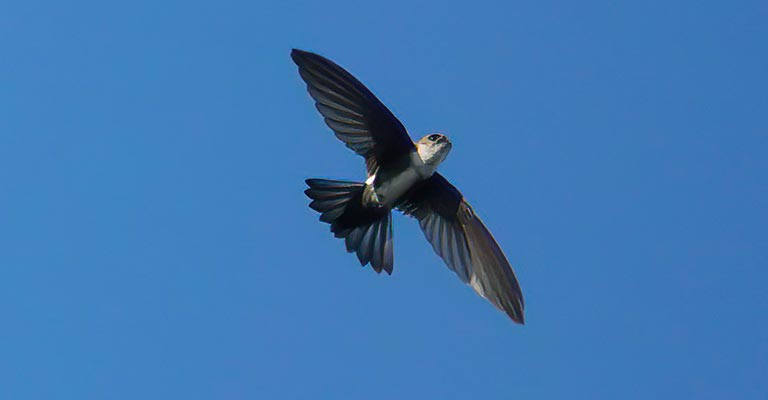
The Antillean Palm Swift (Tachornis phoenicobia) is a fascinating avian species native to the Caribbean, renowned for its distinctive behavioral habits.
These behaviors provide insights into their adaptation to specific environments and unique ways of navigating their surroundings.
Aerial Foraging
Antillean Palm Swifts are adept aerial foragers, capturing small insects mid-air with incredible precision.
Their swift and agile flight allows them to navigate through dense vegetation, making them efficient hunters in their preferred habitats of palm groves and coastal regions.
Social Grouping
These swifts exhibit social behaviors, often observed in small groups. Mutual grooming and vocal interactions are common among individuals within these groups, highlighting a sense of community and cooperation in their social structure.
Distinctive Flight Patterns
The Antillean Palm Swift showcases distinctive flight patterns characterized by rapid wing beats and intricate aerial acrobatics.
Their ability to make sharp turns and maneuvers aids in hunting, navigation, and communication within their habitats.
Nesting Under Palm Fronds
A unique behavioral trait is their choice of nesting sites. Antillean Palm Swifts construct hanging nests under palm fronds, providing a secure location for raising their young.
This behavior safeguards their offspring and reflects their close association with palm-dominated landscapes.
Nocturnal Roosting
Antillean Palm Swifts are known to engage in nocturnal roosting, gathering in communal roosting sites at night.
These gatherings serve social and protective purposes, reinforcing their connection with their fellow swifts.
The behavioral habits of Antillean Palm Swifts are a testament to their evolutionary adaptations, enabling them to thrive in their unique Caribbean habitats.
These behaviors contribute to the species’ ecological role and emphasize the importance of understanding their intricate ways of life.
Wrapping Up
With its unique nesting strategies, aerial prowess, and social behaviors, the Antillean Palm Swift stands as a captivating emblem of avian adaptation in the Caribbean.
From their distinctive flight patterns to their cooperative nesting habits under palm fronds, these swifts illuminate the intricate dance of life in tropical ecosystems.
Understanding their habits enriches our appreciation of biodiversity. It underscores the need for conservation efforts to preserve their specialized habitats and ensure the survival of this remarkable species in the face of environmental challenges. Thank you very much.